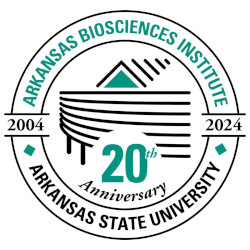Document Type
Article
Publication Title
Translational psychiatry
PubMed ID
33654056
MeSH Headings (Medical Subject Headings)
Amines (therapeutic use); Antidepressive Agents (therapeutic use); Carnitine (analogs & derivatives); Citalopram (therapeutic use); Depression; Depressive Disorder, Major (drug therapy); Humans; Lipids; Selective Serotonin Reuptake Inhibitors (therapeutic use)
Abstract
Selective serotonin reuptake inhibitors (SSRIs) are the first-line treatment for major depressive disorder (MDD), yet their mechanisms of action are not fully understood and their therapeutic benefit varies among individuals. We used a targeted metabolomics approach utilizing a panel of 180 metabolites to gain insights into mechanisms of action and response to citalopram/escitalopram. Plasma samples from 136 participants with MDD enrolled into the Mayo Pharmacogenomics Research Network Antidepressant Medication Pharmacogenomic Study (PGRN-AMPS) were profiled at baseline and after 8 weeks of treatment. After treatment, we saw increased levels of short-chain acylcarnitines and decreased levels of medium-chain and long-chain acylcarnitines, suggesting an SSRI effect on β-oxidation and mitochondrial function. Amines-including arginine, proline, and methionine sulfoxide-were upregulated while serotonin and sarcosine were downregulated, suggesting an SSRI effect on urea cycle, one-carbon metabolism, and serotonin uptake. Eighteen lipids within the phosphatidylcholine (PC aa and ae) classes were upregulated. Changes in several lipid and amine levels correlated with changes in 17-item Hamilton Rating Scale for Depression scores (HRSD). Differences in metabolic profiles at baseline and post-treatment were noted between participants who remitted (HRSD≤ 7) and those who gained no meaningful benefits (<30% reduction in HRSD). Remitters exhibited (a) higher baseline levels of C3, C5, alpha-aminoadipic acid, sarcosine, and serotonin; and (b) higher week-8 levels of PC aa C34:1, PC aa C34:2, PC aa C36:2, and PC aa C36:4. These findings suggest that mitochondrial energetics-including acylcarnitine metabolism, transport, and its link to β-oxidation-and lipid membrane remodeling may play roles in SSRI treatment response.
First Page
153
DOI
10.1038/s41398-020-01097-6
Publication Date
3-2-2021
Recommended Citation
MahmoudianDehkordi, Siamak; Ahmed, Ahmed T.; Bhattacharyya, Sudeepa; Han, Xianlin; Baillie, Rebecca A.; Arnold, Matthias; Skime, Michelle K.; John-Williams, Lisa St; Moseley, M Arthur; Thompson, J Will; Louie, Gregory; Riva-Posse, Patricio; Craighead, W Edward; McDonald, William; Krishnan, Ranga; Rush, A John; Frye, Mark A.; Dunlop, Boadie W.; Weinshilboum, Richard M.; and Kaddurah-Daouk, Rima, "Alterations in acylcarnitines, amines, and lipids inform about the mechanism of action of citalopram/escitalopram in major depression" (2021). Arkansas Biosciences Institute. 52.
https://arch.astate.edu/abi/52


